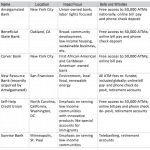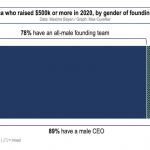Four Steps to Avoid Dead-End Impact Investing Leads
It seemed like his conversations with investors were going just as he’d hoped. They answered the introductory email from a mutual friend, and after a quick live pitch at a U.S. conference they said: “We have money to invest, you’re the kind of enterprise we like to invest in, and we’d like to learn more.” He was thrilled, and he needed the money to grow. He sent them his long deck and invited them to visit his factory in Africa. To his delight, these prominent global investors flew across the ocean to discuss his business, visit his sites, and speak with his workers and customers. He knew how precious this opportunity was, and he wined and dined them at the best local restaurants and showed them the best places to stay, shop and play – engaging with them for over a week.
But on their last day in-country, when they sat down to talk numbers, their enthusiasm waned. They said, “We’re not sure we’re ready to invest in a country like this.” And “We need to look more carefully into the risks of the legal system here.” And “We’ll have to get back to you.” He lined up a local attorney to speak with them, but they didn’t return his calls or emails for weeks. And when they did, they thanked him for the visit but explained that they just couldn’t get past the risk of investing in his country.
He was furious. And frustrated. Shouldn’t they have told him that before coming to visit?
At CASE, (the Center for the Advancement of Social Entrepreneurship at Duke University’s Fuqua School of Business), we cringe when we hear stories like this. They involve wasted time and resources, disappointment, and the erosion of relationships. And they sometimes involve the exchange of capital that ends up being a poor fit for the entrepreneur’s business. We have wondered how we could be more proactive in helping entrepreneurs identify and pursue aligned investors, and avoid wasting time on those who are unlikely to ever invest or add value.
Actively Triage Investors by their Alignment with Your Needs
As part of our CASE Smart Impact Capital™ online toolkit, we created a simple four-step triage process to help impact entrepreneurs filter the world of investors down to a handful of top targets. Many entrepreneurs start by asking: Who is looking for the kind of financial return I can provide? And that is simply the wrong way to identify impact investors, who are looking for a match with many other conditions in addition to financial return. Based on interviews with entrepreneurs who have successfully raised capital, we created a way to quickly identify important alignment criteria to find which investors are a fit. The Investor Alignment Tool is available for free; just visit our website for download instructions. (And honestly, investors can use it too, as both parties need to find alignment!)
How Can This Help You?
When one of us (Cathy) introduced entrepreneurs to this method on the accelerator day at SOCAP 2017, an entrepreneur raised his hand with excitement. While discussing his criteria with someone at his table, the person shared that he actually knew an investor really well-aligned with those criteria. Lesson learned? When you can clearly articulate your alignment criteria, it is MUCH easier for your peers and stakeholders to identify and connect you with aligned investors. Another benefit? Once you do communicate with that investor, you won’t need to start with the most basic questions because you’ll already know the answers from your targeted research. And that will make an impression. So, you can save time and get a leg up on the relationship. But, how do you actually do it?
The Four Steps
STEP 1: Narrow in on investors by type
Before you try to identify individual investors, make sure you are looking broadly at the kinds of people, funds or institutions who might want to invest in your business. Our toolkit lists 11 general types (from angels to funds, foundations, government agencies, online platforms and beyond). As a part of this process, you will want to decide on what kind of capital instrument is right for you (i.e., debt, equity, etc.) and then figure out which types of institutions in the impact space offer that kind of capital. (Within the Smart Impact Capital portal is a Types Of Capital Comparison Tool that allows you to narrow in on types of capital after answering five simple questions.) Once you narrow, exclude the investor types that do not offer what you are looking for and concentrate on the types that do.
STEP 2: Define & document your filter criteria
Wait! It’s not time to select individual investors yet. First, experienced entrepreneurs say, you need to understand and articulate your own criteria for partnering with an investor. This is so you don’t find out months into a relationship that they haven’t ever invested in Africa and are uncomfortable doing so. Our Investor Alignment Tool is designed to help you document your criteria and filter potential investors to find and prioritize those who are most aligned.
We’ve narrowed it down to two main kinds of criteria:
- Knockout criteria: areas where it is essential to match with an investor, and where a deal cannot occur if you don’t match. For instance, let’s take geography: If an investor doesn’t invest in Southeast Asia and you are based in Southeast Asia, that’s an automatic no-go. There are at least six to think about, including:
- Investment Geography. Does the investor invest in places we operate or are headquartered?
- Legal Structure. Does the investor invest in our legal structure (i.e., for-profit, nonprofit, hybrid)?
- Investment Size. Do they generally invest the amount we are seeking?
- Fit criteria: elements where you should look for compatibility, but where you may be flexible. Document your expectations of the extent to which it is critical that an investor match you on 10 other items, including those related to:
- Mission & Vision
- What are the Entrepreneur’s Expectations?
- What are the Investor’s Expectations?
Work with your team to know where you and your stakeholders stand on these criteria, and how important they are to your business. You can input it all into the Investor Alignment Tool.
STEP 3: Conduct targeted research
With your target investor types in mind, and your knockout and fit criteria in hand, now you can do some focused research. We have helpful databases and shortcuts in our Targeted Investor Research Guide, and many of the databases allow for filtering using the criteria you have defined in Step 2. As you come across potential investors, pop them into your Investor Alignment Tool and see how they measure up against your criteria and against each other. Use the tool as you talk to them and others to document what you learn and collect a fuller picture of how they align with you. Based on your scoring for each factor, the tool ranks your investors numerically – so you end up with a prioritized list from most to least aligned. You’ll emerge from this process with a shorter list of targets worth your time and resources to pursue further.
STEP 4: Assess your results
Hopefully, by this step, you have some strong prospects to pursue. You can then move on to investor outreach – and we have a number of tools to maximize that process as well (including templates for your outreach documents, as well as the four “investment stories” that successful social entrepreneurs use). But if you didn’t emerge with a number of strong prospects, what have you learned? Are some of your criteria too limiting? Is there simply a lack of investors in your intersection of industry, geography, stage, etc.? You can try to enlarge your pool of potential investors by including more investor types, adjusting your criteria, and conducting additional research. But what you don’t want to do is spend your time going after dead-end leads, since you should have the ability to ascertain that up front.
Plug into CASE Smart Impact Capital to learn more today, and see how our online toolkit could help make your next fundraiser easier. Using short videos, downloadable resources and reusable tools, Smart Impact CapitalTM brings together lessons from entrepreneurs, investors and intermediaries, and has been used by hundreds of entrepreneurs in over 30 countries and by groups like Duke, Stanford University, MIT, SPRING Accelerator, SOCAP, Unreasonable Institute (now Uncharted), Cordes Foundation, Clinton Foundation, Investors’ Circle, USAID and many more. Join our online demo on March 13 or March 19 to learn more. Sign up here: http://bit.ly/2sXt8zR
We have different licensing options to meet the needs of individual entrepreneurs, entrepreneur-support organizations (e.g. accelerators, funders), and academic institutions. See the options here, and you can always email us at CASESmartImpact@duke.edu to follow-up.
Note: The Center for the Advancement of Social Entrepreneurship (CASE) at Duke University’s Fuqua School of Business will host an online demo on March 13 and March 19 to introduce CASE Smart Impact Capital. Sign up here.
Kimberly Langsam is senior program director at the Center for the Advancement of Social Entrepreneurship (CASE) at Duke University’s Fuqua School of Business.
Cathy Clark is the director of the CASE i3 Initiative on Impact Investing and faculty director of CASE at Duke University’s Fuqua School of Business.
Photo by Savvas Stavrinos via Pexels
- Categories
- Impact Assessment, Investing



